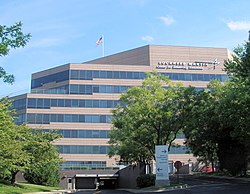This article needs additional citations for verification .(July 2008) |
This article needs to be updated. The reason given is: IOC of the MK 54 torpedo was 15 years ago; The RUM-139 has possibly undergone major revisions since.(January 2026) |
| RUM-139 VL-ASROC | |
|---|---|
 RUM-139 midflight | |
| Type | Anti-submarine missile |
| Place of origin | United States |
| Service history | |
| In service | 1993 – present |
| Used by | United States Navy, Japan Maritime Self-Defense Force and others |
| Production history | |
| Designer | Goodyear Aerospace |
| Designed | 1983 – 1993 |
| Manufacturer | Lockheed Martin |
| Produced | 1993 – present |
| Specifications | |
| Mass | 1,409 lb (639 kg) |
| Length | 16 ft 1 in (4.89 m) |
| Diameter | 1 ft 2 in (358 mm) |
| Wingspan | 2 ft 3.4 in (696 mm) |
| Warhead | RUM-139A: Mark 46 Mod 5 torpedo RUM-139B: Mark 46 Mod 5A(SW) torpedo RUM-139C: Mark 54 torpedo [1] |
| Engine | Two-stage solid-fuel rocket |
Operational range | 12 nmi (22 km) [2] |
| Maximum speed | Mach 1 (309 m/s; 1013 ft/s) |
Guidance system | Inertial guidance and Mk 210 Mod 0 Digital Autopilot Control subsystem |
Launch platform | Mk 41 VLS |
| References | Janes [3] |
The RUM-139 Vertical-Launch Anti-Submarine Rocket (VL-ASROC or VLA) is an anti-submarine missile in the ASROC family, currently built by Lockheed Martin for the U.S. Navy. [1]
